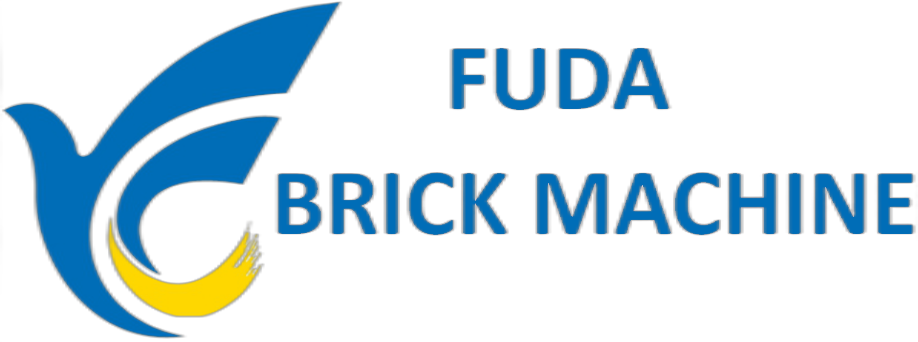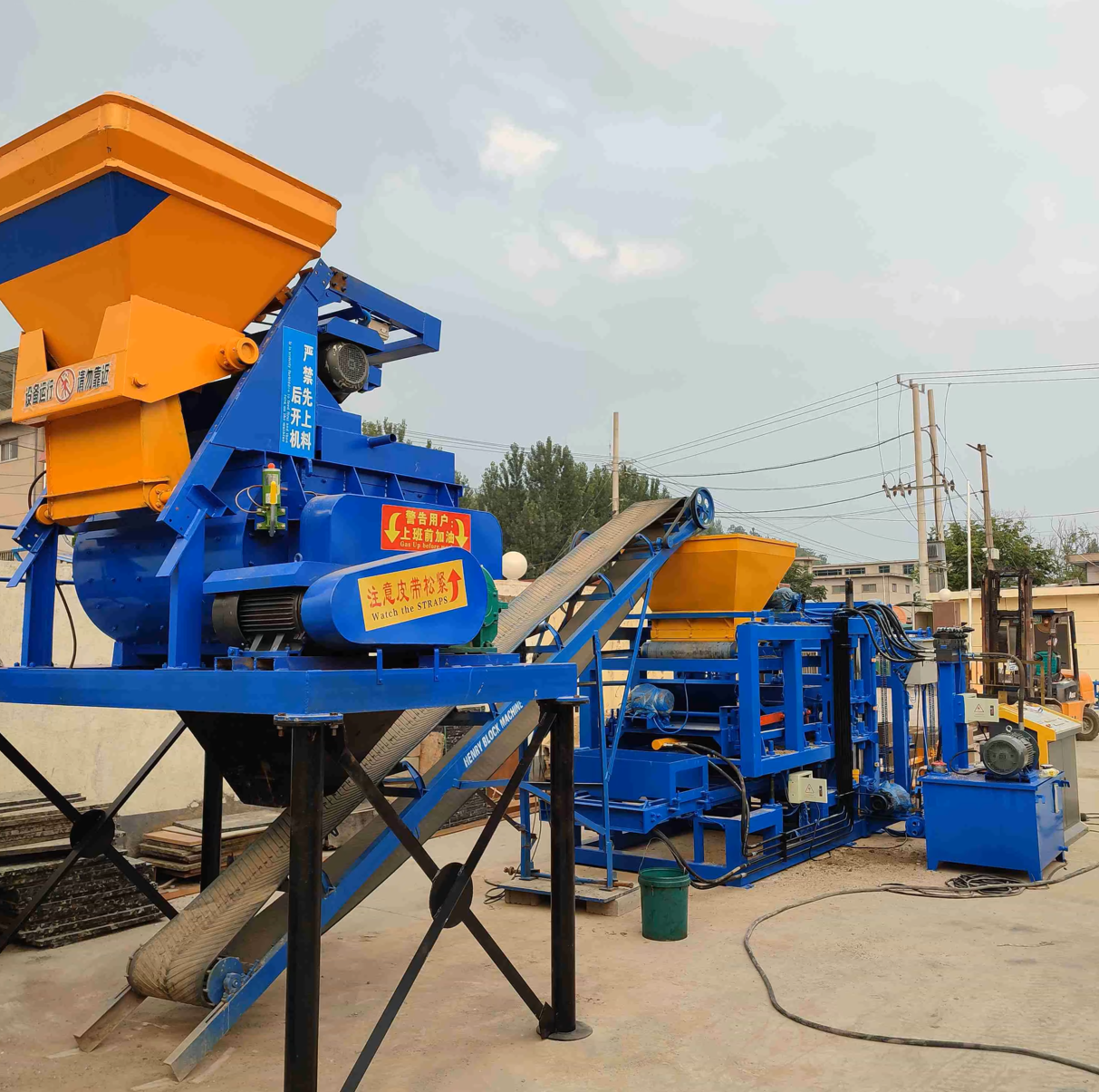The Rise of Semi Automatic Block Making Machines in Modern Construction
The brick manufacturing sector worldwide is turning to semi automatic block makers as a practical fix for changing labor markets and growing pressure on environmental impact. According to recent findings from the Brick Industry Association in their 2023 report, around two thirds of smaller brick plants have started investing in these partial automation solutions. The goal? Cut down on manual work by roughly a third to forty percent but still keep workers flexible enough to handle different tasks. These hybrid machines sit somewhere between old school methods and full automation setups. Electric vibrating molds help maintain uniform block density throughout production runs. Meanwhile, experienced workers continue handling important jobs like feeding raw materials into the system and doing spot checks on product quality across batches.
India, Nigeria, and Vietnam have been behind most of the growth in semi automatic machines over recent years. According to the ASEAN Construction Materials Report from 2023, these countries account for around 78% of all new installations since 2018. The report points out that these emerging economies find them particularly useful for smaller scale operations where full automation isn't always necessary. Many manufacturers including major Chinese exporters are starting to install smart power meters connected through the internet. These devices help track and manage electricity consumption better, which can save about twelve thousand dollars each year on running costs for individual units. Looking at the numbers makes sense why so many businesses choose semi automatic systems instead of going fully automated right away. At prices ranging from twenty five to forty five thousand dollars per machine, companies get roughly eighty five percent of what full automation offers while spending only thirty five percent of what it would cost to go all in on automation technology.
| Manual Presses | Semi-Automatic Machines | Fully Automatic Lines | |
|---|---|---|---|
| Avg. Output (Blocks/Hr) | 120–180 | 450–700 | 1,200–2,000 |
| Labor Required | 6–8 workers | 2–3 operators | 1 supervisor |
| ROI Period | 24+ months | 10–14 months | 18–22 months |
Data: Global Construction Automation Report 2023
By balancing human oversight with mechanized precision, these machines address skilled labor shortages without displacing traditional brick-making roles entirely – a key factor in their 19% annual growth across Latin American and African markets.
Key Technological Advancements in Semi Automatic Block Making Machines
From Manual Presses to Smart Hybrid Systems
Block making machines that work semi-automatically have come a long way since those basic hand operated presses of old. Today's versions combine what humans do with smart automation, creating something better than either could alone. The newer models can actually run their compression cycles about 85 percent quicker than older ones did back in the day, so they finish an entire block set in just under 18 seconds flat. These hybrid machines use these fancy things called PLCs (programmable logic controllers) to make sure materials get measured right and molds line up properly. This setup cuts down on mistakes people might make and still lets manufacturers tweak things when they need to make smaller batches. And there's another plus side too these systems waste around 22 percent less raw material than when everything was done manually, which adds up over time.
Innovations Improving Production Efficiency and Precision
Recent advancements focus on output consistency and energy efficiency. Hydraulic vibration systems now achieve 99.2% density uniformity in blocks, ensuring compliance with ISO 9001 standards. Energy consumption has been reduced by 34% through regenerative braking in compaction motors, as demonstrated in 2024 trials by leading providers. Key improvements include:
- Self-calibrating mold frames eliminating setup delays
- Multi-stage compaction for hollow block designs
- Photoelectric sensors detecting material inconsistencies in real time
Integration of IoT and Real-Time Monitoring Features
IoT sensors and cloud-based analytics have transformed semi-automatic machines into data hubs. Over 62% of manufacturers embed wireless sensors to track motor temperatures, vibration patterns, and production rates. This data enables:
- Predictive maintenance alerts reducing downtime by 41%
- Remote performance tuning via mobile interfaces
- Automated quality logs for regulatory compliance
Sites using real-time monitoring produced 28% fewer defective blocks monthly, according to a 2023 industry analysis. This connectivity allows gradual scaling toward full automation as operations expand.
Output and Labor Requirements Across Automation Levels
The amount of bricks produced really depends on how automated the system is. Take manual machines such as the LT2-40 for example these need around three to five people working together all day long just to make less than a thousand bricks. That's not great if someone wants to scale up operations quickly. Then there are semi automatic options like the QT4-25C which cuts down on workforce needs to just one or two individuals. These machines can crank out over two thousand bricks a day thanks to features like automatic mold making and powerful hydraulic presses doing most of the heavy lifting. At the top end we find fully automatic systems such as the QT4-15 model. These advanced setups can produce between three thousand five hundred to four thousand bricks during a single work shift. They run on programmable logic controllers (PLCs) that handle everything from mixing materials to final shaping with very little human intervention needed throughout the process.
| Automation Level | Daily Output | Workers Needed | Key Use Case |
|---|---|---|---|
| Manual | <1,000 | 3–5 | Small rural projects |
| Semi-Automatic | 2,000–2,500 | 1–2 | Mid-sized developments |
| Fully Automatic | 3,500–4,000 | <1 | Large urban contracts |
Cost, Affordability, and Return on Investment Analysis
Semi automatic block makers strike just the right balance when it comes to keeping costs down without sacrificing too much efficiency. These machines cost about 40 percent less to buy initially compared to their fully automated counterparts. While the price range for semi auto models is around $15 thousand to $25 thousand, full automation can run anywhere from $45k all the way up to $70k. Most mid sized operations see their return on investment within 18 to 24 months after switching over. Factories moving away from completely manual production find these semi automatic systems cut energy bills by roughly 20 to 30 percent at the same time they're able to produce twice as many blocks. The savings and increased productivity make this option look pretty good compared to what the more expensive machines bring to the table.
Production Capacity and Operational Efficiency Compared
Fully automatic machines tend to take over when it comes to big projects, but many contractors find that semi-automatic versions still get around 70 to 80 percent of what they need done while offering much more flexibility. Real world experience shows workers can switch from solid blocks to hollow ones or even pavers within just fifteen minutes on these semi-auto setups. That kind of adaptability makes all the difference when dealing with different building requirements across various sites. Another thing worth noting is that there are roughly 85 percent fewer stoppages during production compared to completely manual operations. This becomes especially valuable in areas where finding skilled workers isn't always straightforward, making semi-automatic equipment a smart choice for many construction companies trying to maintain consistent output despite workforce fluctuations.
Sustainability, Efficiency, and Labor Impact of Semi Automatic Machines
Enhancing Construction Efficiency While Reducing Environmental Footprint
Semi-automatic block making machines achieve 80–85% operational uptime, minimizing energy waste during production cycles. Optimized compression ratios lower concrete consumption by 18–22% per block without compromising strength–significantly reducing the carbon footprint of masonry production.
Supporting Sustainable Practices Through Balanced Automation
Partial automation enables 30–40% faster production cycles than manual operations while using 25% less water per batch. Smart process controls automatically adjust mixing times and curing humidity, preventing resource overuse common in traditional methods. Operators maintain oversight to handle material variations, avoiding the inefficiencies of rigid, fully automated presets.
Addressing Skilled Labor Shortages Without Full Workforce Displacement
Semi-automatic systems reduce manual labor needs by 50% compared to conventional methods while preserving 70% of existing jobs through role transformation. Workers transition into machine operation and quality control positions, maintaining employment continuity while boosting productivity–an essential balance in regions confronting construction skills gaps.
Market Outlook and Leading Players in the Semi Automatic Block Making Machine Industry
Global Demand Trends and Regional Manufacturing Hubs
Market analysts expect the worldwide semi automatic block making machine sector to expand quite substantially over the next decade, with an estimated growth rate around 6.8 percent annually until 2030. Much of this growth stems from expanding infrastructure across regions like Asia Pacific and Africa. Nations such as India and Nigeria have started incorporating these machines into their affordable housing programs because they fit within budget constraints. The machines typically cost between eighteen thousand and thirty five thousand dollars, allowing manufacturers to produce anywhere from eight hundred to one thousand two hundred blocks each day. China remains the largest producer in this space, followed closely by Turkey, together accounting for roughly sixty two percent of all machines made globally. Meanwhile, Latin American countries are seeing significant increases in imports, with reports showing about twenty two percent annual growth in purchases during the three year period from 2021 to 2023. This uptick makes sense given the region's need for quick and economical construction materials to support ongoing urban development efforts.
Linyi Yingcheng International Trade Co Ltd: Innovation in Export-Oriented Manufacturing
Since 2021, Linyi Yingcheng International Trade Co Ltd has managed to secure around 18% of the cross border equipment market thanks to their modular approach and designs that can be adapted for different needs. What makes these systems stand out is the adjustable molding chambers they include, plus the ability to work with alternative materials such as fly ash or recycled aggregates. This actually helps them meet various sustainability standards throughout regions like Southeast Asia and parts of the Middle East where environmental regulations are becoming stricter each year. The company also offers voltage options ranging from 220 to 440 volts along with on site technical assistance which cuts down installation time by roughly 40% when compared to what most competitors achieve. Looking at this success story shows just how important it is for manufacturers today to bridge the gap between cutting edge technology developed globally and the real world conditions faced by builders in specific locations.
FAQ
What are semi automatic block making machines?
Semi automatic block making machines are a hybrid solution for brick manufacturing, combining manual labor with partial automation to increase efficiency and reduce labor demands.
How do these machines benefit construction projects?
They help cut down on labor costs, enhance production efficiency, and reduce environmental impact, making them ideal for small to medium scale operations.
How much do semi automatic block machines cost?
The cost ranges from $15,000 to $45,000 depending on features and capacity.
What is the return on investment for these machines?
Most operations see a return on investment within 10-24 months.
How do these machines impact labor requirements?
They significantly reduce manual labor needs while still preserving jobs through role transformation into machine operation and quality control positions.
Table of Contents
- The Rise of Semi Automatic Block Making Machines in Modern Construction
- Key Technological Advancements in Semi Automatic Block Making Machines
- Output and Labor Requirements Across Automation Levels
- Cost, Affordability, and Return on Investment Analysis
- Production Capacity and Operational Efficiency Compared
- Sustainability, Efficiency, and Labor Impact of Semi Automatic Machines
- Market Outlook and Leading Players in the Semi Automatic Block Making Machine Industry
- FAQ

